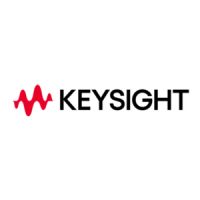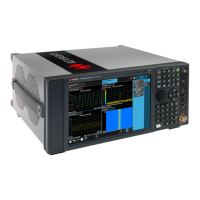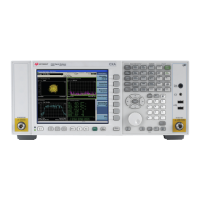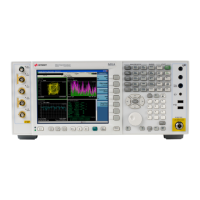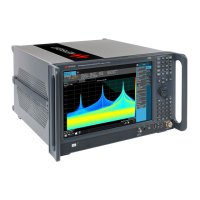74
Measuring Noise
Measuring Noise Using the Noise Marker
Measuring Noise Using the Noise Marker
This procedure uses the marker function, Marker Noise, to measure noise in a 1 Hz
bandwidth. In this example the noise marker measurement is made near the 50 MHz
reference signal to illustrate the use of Marker Noise.
Step Action Notes
1 Set the analyzer to the
Spectrum Analyzer
mode.
• Press Mode, Spectrum
Analyzer.
This enables the spectrum analyzer
measurements
2 Preset the analyzer. • Press Mode Preset.
3 Enable the internal
reference signal.
• Press Input/Output, RF
Calibrator, 50, MHz.
4 Set the center frequency,
span, reference level and
attenuation.
a. Press FREQ Channel,
Center Freq, 49.98, MHz.
b. Press SPAN X Scale,
Span, 100, kHz.
c. Press AMPTD Y Scale,
Ref Level, −10, dBm.
d. Press AMPTD Y Scale,
Attenuation, Mech Atten
Man, 40, dB.
5 Turn on the noise marker. • Press Marker Function,
Marker Noise.
Note that display detection automatically
changes to “Avg”; average detection
calculates the noise marker from an
average value of the displayed noise.
Notice that the noise marker floats
between the maximum and the minimum
displayed noise points. The marker
readout is in dBm (1 Hz) or dBm per unit
bandwidth.
For noise power in a different bandwidth,
add . For example, for noise
power in a 1 kHz bandwidth, dBm
(1 kHz), add or 30 dB to the
noise marker value.
6 Reduce the variations of
the sweep-to-sweep
marker value by
increasing the sweep
time.
• Press Sweep/Control
,
Sweep Time, 3, s.
Increasing the sweep time when the
average detector is enabled allows the
trace to average over a longer time
interval, thus reducing the variations in
the results (increases measurement
repeatability).
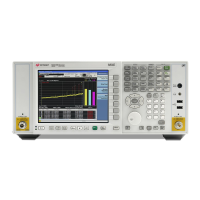
